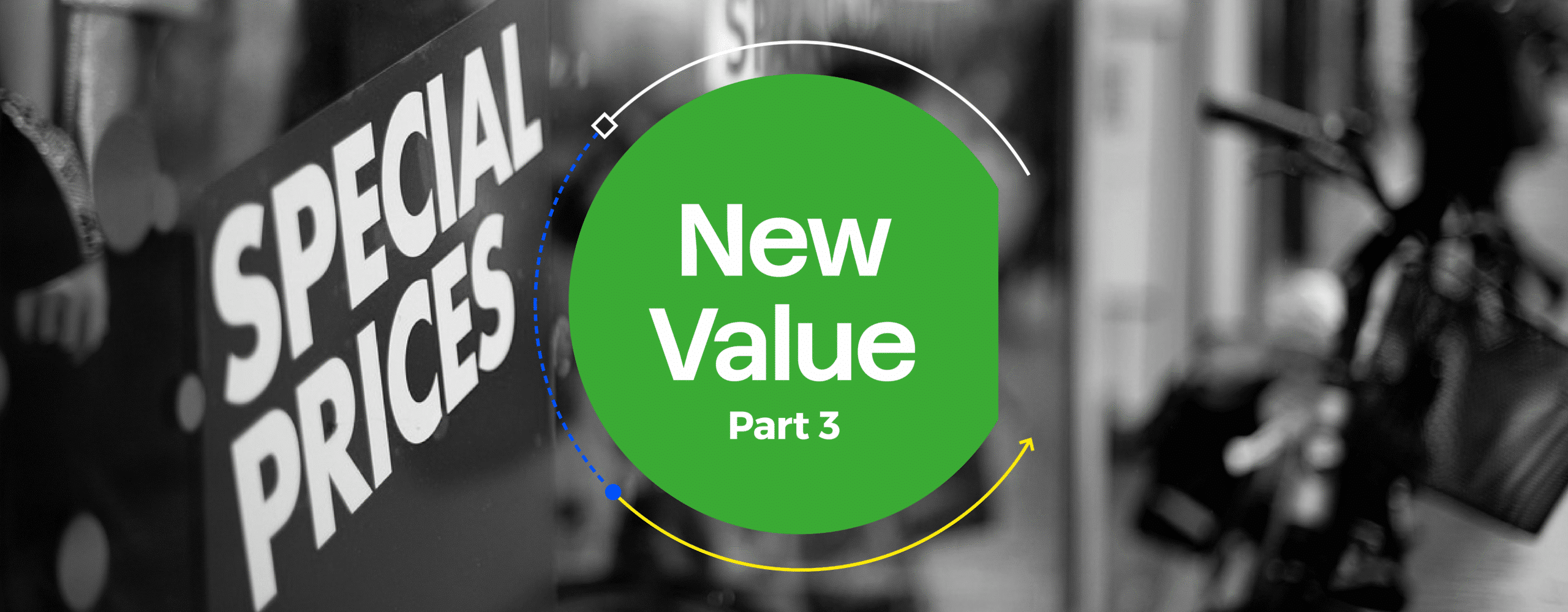Rethinking Value in UK Retail
Value doesn’t always mean cheap, and cheap doesn’t always scream value. In fact, the whole idea of value is undergoing a stylish makeover in UK retail. No longer just about slashed prices or red discount stickers, value is being redefined by design, sustainability, and experience.

Why does red mean sale?
Let’s start with the colour red. It’s a curious thing. In design, red is the universal signal for attention here! It’s urgency, passion, and in retail, discounts.
Historically, red has shouted SALE from high streets and supermarkets. They tap into primal consumer psychology: red speeds up the heart rate. It’s dynamic, emotional, and hard to ignore. But here’s the catch: red doesn’t mean trust. It screams immediacy rather than longevity. It gets shoppers through the door but doesn’t always keep them there. So, while red remains the colour of urgency, brands seeking deeper engagement are painting value with a more nuanced palette.
Some brands are flipping the script.
They’ve looked at the screaming red and said, let’s use our inside voices.
John Lewis: Value with Values
Their ‘Value with Values’ strategy blends fair pricing with ethics. It’s not just what you pay it’s what the brand stands for. Their ANYDAY range hit the market at accessible prices, but the design didn’t scream budget. It whispered smart. They’ve taken the IKEA model, affordable form meets functional design and given it a more British, lifestyle driven spin.

ALDI & Lidl: The irony of cheap that doesn’t feel cheap
These two deserve a moment. Yes, they thrive on low prices, but they’ve rebranded the entire concept of discount retail. With clean store designs, well-lit shelves, and product photography that wouldn’t look out of place in a Waitrose magazine, they’ve made shopping cheap feel… oddly aspirational.
Special-buys are marketed with the same energy, it’s thrilling you don’t just buy a £4.99 coffee grinder. You discover it, like a treasure hunter.

Design: Where Value meets Perception
A £9 t-shirt can look like a £90 t-shirt if you get the design right. Value in the modern retail landscape is often about perception, not just cost.
Good design isn’t a luxury anymore, it’s an expectation. Think of MUJI that delivers minimalist aesthetics at accessible price points. Their value proposition is embedded in a sense of calm, coherence, and purpose. No garish signs, no BUY 3 FOR 2! Just quality, consistency, and a little Zen.
Sustainability: The New Currency of Value
Let’s be honest, ten years ago sustainability was retail code for more expensive and a bit rough to the touch. But things have changed. Now, sustainability is value, especially to Gen Z and millennials who see buying better as a way of saving the planet and their consciences.
Patagonia set the tone globally with “Don’t Buy This Jacket,” encouraging repair over replace. In the UK, brands even like ASDA’s George have started baking in circular thinking with their take-back schemes – 10% off at George.com when you pack up, drop off your old clothes and textiles at one of their collection points.
These retailers are challenging the idea that fast and cheap is good. They’re showing that longevity is luxury, and that can be the best kind of value.

The Problem with Looking ’Cheap’
Cheap looking design is bad value even when the product isn’t. If something feels like it’ll break, doesn’t sit well in your hand, or uses Comic Sans (may it rest), it doesn’t matter what the price tag says. If you pick something up and you can hear it rustle like a crisp packet, you’ll think twice even if it’s a tenner.
Retailers today need to work harder to make value feel rich. That doesn’t mean velvet cushions in every aisle, but it does mean thoughtful packaging, materials that don’t feel like an afterthought, and layouts that feel curated, not crammed.
So, what is value in 2025?
It’s complex. For some, it’s still price led. For others, it’s ethics. For many, it’s how a product makes them feel.
But here’s a good rule of thumb: value today is trust + design + relevance.
- Trust that the product will last, and the brand won’t ghost you post-purchase.
- Design that reflects care, not cost-cutting.
- Relevance to your life, your ethics, your Instagram feed.
You’re not fooling anyone with a flashing SALE sign
Today’s consumer is savvy. They know when something is a genuine deal and when it’s just a price inflated last week so it can be discounted today.
They’re scrolling, searching, price comparing, unboxing, and discovering the narrative on TikTok.
To them, value isn’t a four-letter word that ends in £. It’s a story. A feeling. Sometimes even a smell (shoutout to Lush, who have built an empire on bath bomb value via pure scent marketing).
Retailers who get that? They’re not racing to the bottom. They’re building loyalty, slowly and steadily. And in retail, that’s priceless.










